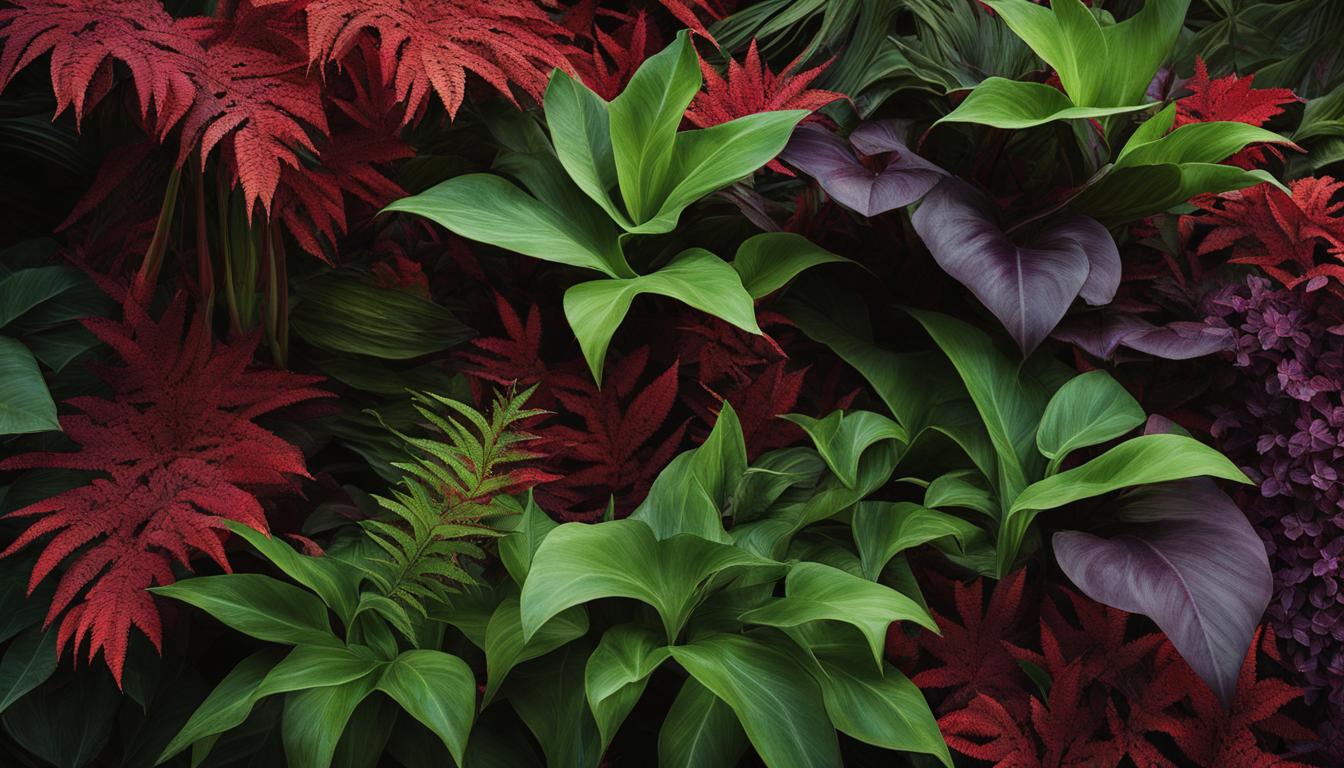
Foliage plants offer a captivating display of textures in our gardens. They provide long-lasting beauty and complement the vibrant colors and fragrance of blooms.
By incorporating a variety of foliage, we can elevate our gardening to a whole new level. Let’s explore some of the best foliage plants to incorporate into our garden beds, containers, and borders.
Key Takeaways:
- Foliage plants add texture and visual interest to gardens.
- Assorted foliage plants can be incorporated into garden beds, containers, and borders.
- Large foliage plants create a bold statement in landscapes.
- Plants and foliage work together to enhance the beauty of gardens.
- There are various types of foliage plants to choose from, offering diversity and creativity.
Adding Texture with Ornamental Grasses
Ornamental grasses are a fantastic addition to any garden, providing texture and visual interest with their unique characteristics. These native varieties offer a range of features, from vertical blades to feathery plumes and intriguing seed heads, making them a versatile choice for creating captivating landscapes.
One standout option is maiden grass (Miscanthus sinensis), which boasts elegant arching blades that add height and drama to garden beds. Its feathery plumes in late summer and early fall create a stunning display.
Little blue stem (Schizachyrium scoparium) and big blue stem (Andropogon gerardii) are two native grasses that offer vertical blades and attractive seed heads, adding both texture and movement to the garden.
To add a touch of whimsy, consider incorporating switch grass (Panicum virgatum), which has airy seed heads that dance in the breeze. The unique seed heads of feather reed grass (Calamagrostis x acutiflora) are also eye-catching and provide an interesting focal point in any landscape.
| Native Grass Varieties | Main Features |
|---|---|
| Maiden grass (Miscanthus sinensis) | Vertical blades and feathery plumes |
| Little blue stem (Schizachyrium scoparium) | Vertical blades and attractive seed heads |
| Big blue stem (Andropogon gerardii) | Vertical blades and interesting seed heads |
| Switch grass (Panicum virgatum) | Airy seed heads that sway in the wind |
| Feather reed grass (Calamagrostis x acutiflora) | Unique and eye-catching seed heads |
By incorporating these ornamental grasses into our gardens, we can create texture, movement, and visual interest that will elevate the overall aesthetic of our landscapes. Whether used as focal points, borders, or mass plantings, these native grasses are sure to make a statement.
Native Grasses for Every Garden
When choosing ornamental grasses, it’s essential to consider our specific gardening conditions. Some varieties thrive in sunny locations, while others prefer shade. For sunny areas, options like Indian grass (Sorghastrum nutans) and big bluestem are excellent choices, as they can withstand drought and provide excellent texture.
In shady areas, native sedges like Pennsylvania sedge (Carex pensylvanica) and woodland grasses such as bottlebrush grass (Elymus hystrix) can add texture and interest without the need for direct sunlight. These grasses are well-suited for woodland gardens, under trees, or in dappled light.
By selecting native grasses that are well-adapted to our specific growing conditions, we can ensure their success and maximize their impact on our landscapes. Their ability to provide texture, verticality, and movement makes them a valuable addition to any garden.
Stunning Texture with Fantastic Ferns
Ferns are a fantastic way to add stunning texture to your garden. Their delicate and lacy foliage creates a captivating display that can elevate the overall aesthetic of your landscape. Whether you have a sunny or shady spot, there are fern varieties that can thrive in both conditions, making them versatile plants to incorporate into your garden beds and borders.
One of the standout ferns is the ghost fern, with its unique combination of green and silver fronds. This fern adds a touch of elegance with its ethereal appearance, making it a great choice for creating a whimsical and romantic atmosphere in your garden.
Another eye-catching option is the painted fern, which features fronds that range in color from silver to purple, creating a beautiful and vibrant display.
If you’re looking to add a splash of warm color to your garden, consider incorporating bronze ferns. These ferns have stunning coppery-colored foliage that adds a touch of warmth and richness to any landscape. Their unique hue can create a striking contrast against other green foliage plants, making them a standout feature in your garden.
| Fern Variety | Light Requirements | Key Features |
|---|---|---|
| Ghost Fern | Partial to full shade | Green and silver fronds |
| Painted Fern | Partial shade to full shade | Colorful fronds ranging from silver to purple |
| Bronze Fern | Partial to full shade | Coppery-colored foliage |
Adding ferns to your garden not only provides texture but also introduces a graceful and delicate element that can transform your outdoor space. The lacy foliage and unique colors of ghost ferns, painted ferns, and bronze ferns will undoubtedly create a visually appealing and textured landscape.
Native Wildflowers for Beautiful Texture
Native wildflowers are a wonderful addition to any garden, offering not only vibrant blooms but also unique foliage textures. These plants bring diversity and interest to your landscape while attracting pollinators and beneficial insects. Let’s explore some native wildflowers that will add beautiful texture to your garden.
Purple Coneflowers
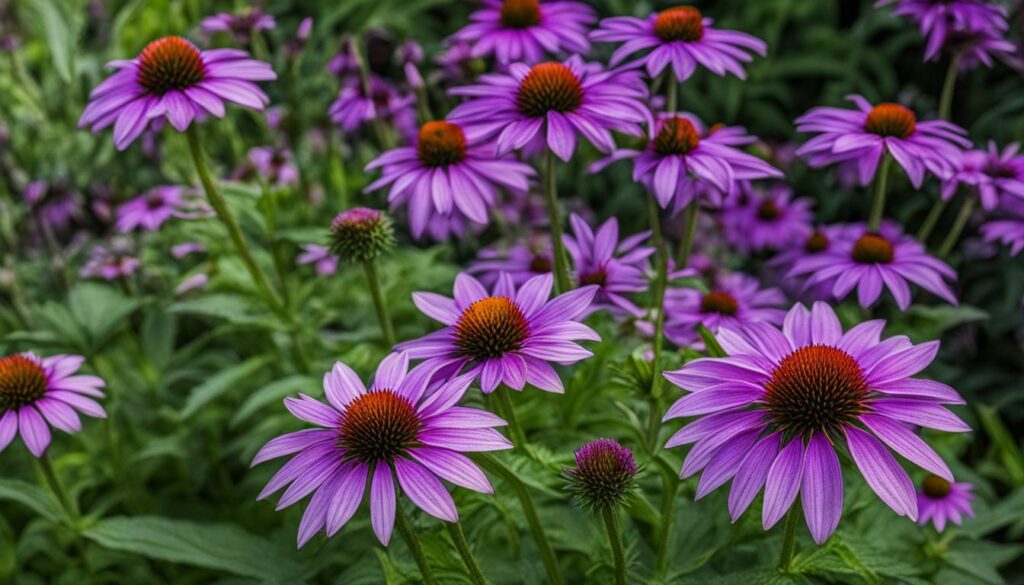
Purple coneflowers (Echinacea purpurea) are a popular choice for their stunning flower heads, but their foliage also contributes to the overall texture of the plant.
The coarse, dark green leaves provide a striking contrast to the vibrant purple petals, creating a visually appealing display. These hardy perennials are drought-tolerant and attract butterflies, making them a great addition to any garden.
Milkweeds
Milkweeds (Asclepias spp.) are known for their importance in supporting monarch butterflies, but they also offer unique foliage and flower textures. The long, thin leaves of milkweeds add a delicate and airy feel to the garden, while the clusters of beautiful blooms and fluffy seeds provide visual interest throughout the season.
From the vibrant orange flowers of the common milkweed to the soft pink hue of the swamp milkweed, these native wildflowers will enhance the texture of your garden.
Spiny Rattlesnake Master
Spiny rattlesnake master (Eryngium yuccifolium) is a unique wildflower that adds both foliage and flower texture to your garden. Its spiky, bluish-green leaves create a striking contrast against the delicate blooms, which form spherical clusters atop tall stems. This native wildflower not only adds visual interest but also attracts pollinators like bees and butterflies.
By incorporating these native wildflowers into your garden, you can create a visually captivating and textured landscape. The contrasting foliage textures and vibrant blooms will add depth and interest to your garden beds, borders, or containers. Embrace the beauty of these native plants and watch your garden come alive with color and texture.
The Artistry of Bark Texture
When it comes to adding texture to our garden landscapes, foliage plants aren’t the only option. The bark of many trees can also provide a visually captivating and textured display.
Native black cherry, white birch, yellow birch, river birch, and striped maple are examples of trees that offer unique and interesting textures through their bark.
Native black cherry, with its squared sections of gray and black bark, adds a touch of elegance and sophistication to any garden. Its bark has a timeless beauty that stands out against the backdrop of green foliage.
White birch, on the other hand, displays layered papery bark in brilliant white, creating a stunning contrast against the surrounding vegetation.
“The bark of the black cherry tree adds a touch of elegance and sophistication to any garden.” – Gardening enthusiast
The yellow birch features bark that peels like paper, revealing a warm, golden-brown color beneath. This distinctive texture adds depth and interest to any landscape.
River birch, with its cinnamon-colored peeling bark, creates a rustic and natural look that is perfect for creating a woodland or cottage-style garden. Striped maple, also known as moosewood, showcases bark with alternating green and white stripes, adding a unique and eye-catching texture to any outdoor space.
| Tree | Bark Description |
|---|---|
| Native Black Cherry | Squared sections of gray and black bark |
| White Birch | Layered papery bark in brilliant white |
| Yellow Birch | Peeling bark with a warm, golden-brown color |
| River Birch | Cinnamon-colored peeling bark |
| Striped Maple | Alternating green and white striped bark |
The artistry of bark texture adds a new dimension to our gardens. By incorporating trees with unique bark characteristics, we can create a visually engaging and textured landscape that complements our foliage plants and other garden elements.
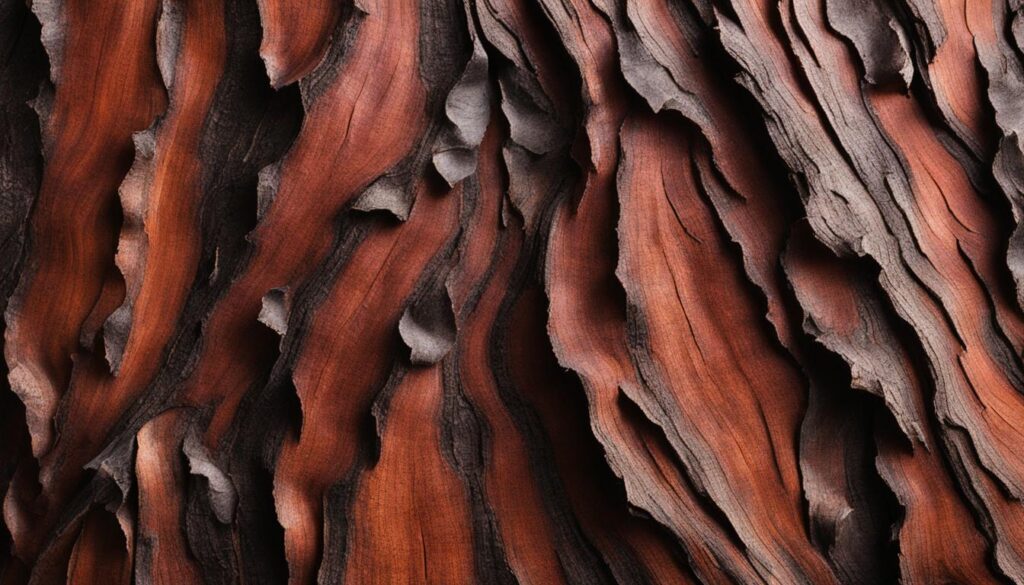
Captivating Texture with Conifers
Conifers are an excellent choice for adding captivating texture to your garden. Their unique foliage and varying colors create visual interest and bring a sense of depth to any landscape.
One of the advantages of conifers is that they come in a wide range of sizes, including miniature and dwarf varieties, making them suitable for gardens of all sizes. Let’s explore some popular conifer options that will enhance the texture of your garden.
Junipers
Junipers are versatile conifers that offer a wide range of textures and colors. These hardy trees and shrubs can be found in various sizes, from low-growing ground covers to towering trees.
One popular variety is the ‘Blue Rug’ juniper, which forms a dense, prostrate ground cover with attractive blue-green foliage. Other noteworthy junipers include the ‘Gold Lace’ with its golden-yellow foliage and the ‘Blue Arrow’ with its narrow, upright growth habit.
Arborvitae
Arborvitae, also known as Thuja, is another great choice for adding texture to your garden. These conifers have soft, scale-like foliage that ranges in color from vibrant green to golden yellow.
One popular arborvitae variety is the ‘Emerald Green’, which forms a narrow pyramid shape and provides a beautiful backdrop for other plants. The ‘Techny’ is a larger arborvitae variety that is commonly used as a privacy screen due to its dense foliage.
Pines and Spruces
Pines and spruces are classic conifers that offer a range of textures and colors. Pines are known for their long, needle-like leaves and can bring a graceful, airy texture to your garden.
Spruces, on the other hand, have short, sharp needles that provide a dense and compact texture. The ‘Blue Spruce’ is a popular variety known for its striking blue color, while the ‘Dwarf Mugo Pine’ is a compact variety that adds a touch of ruggedness to the landscape.
To further enhance the texture of your garden, consider incorporating the tamarack or larch tree. This deciduous conifer features soft, feathery needles that turn a vibrant golden color in the fall, creating a stunning display of texture and color.
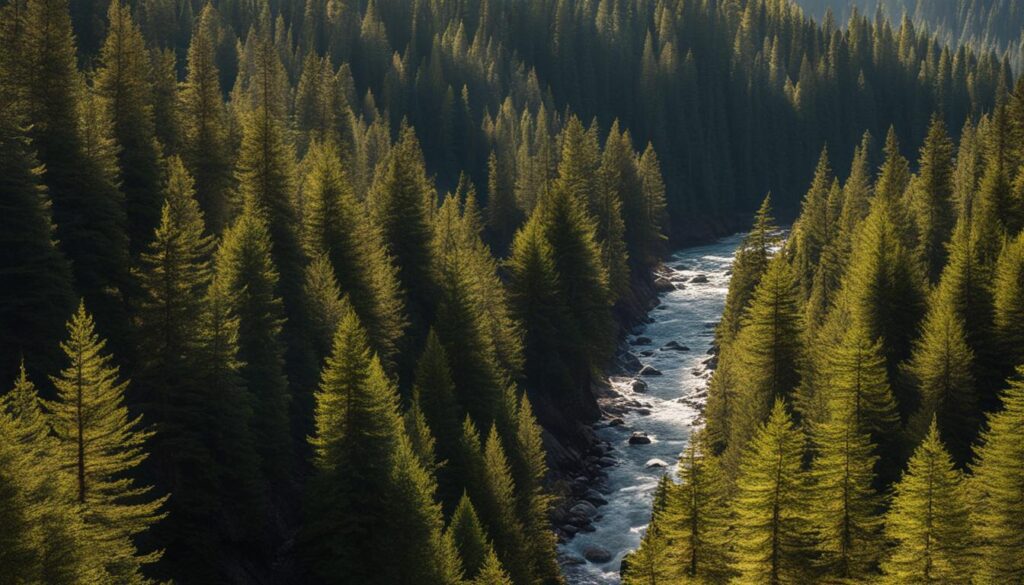
With their unique foliage, varying colors, and diverse sizes, conifers are a captivating addition to any garden. Whether you choose miniature and dwarf varieties like junipers and arborvitae or classic options like pines and spruces, these conifers will bring texture and visual interest to your landscape.
Don’t forget to consider the tamarack or larch tree for its stunning fall foliage. By incorporating conifers into your garden, you can create a visually engaging and textured outdoor space.
Foliage plants provide a world of possibilities for adding texture and visual interest to our gardens. By considering the wide range of foliage options, from ornamental grasses and ferns to native wildflowers and conifers, we can create captivating and textured landscapes.
Whether planting in beds, borders, or containers, incorporating foliage plants will elevate our gardening to a whole new level. The diverse forms and colors of foliage plants offer endless opportunities for creativity and design. From the graceful sway of ornamental grasses to the delicate fronds of ferns, each plant brings its unique character to the garden.
So, let’s immerse ourselves in the world of foliage plants and explore the beauty and diversity they offer. With foliage plants, we can create visually stunning and dynamic landscapes that evolve throughout the seasons.
Let your garden come alive with the textures, colors, and patterns of foliage plants. Bring nature’s artistry into your own backyard and enjoy the captivating beauty it brings.
After reading this, check out our other articles on:
- Popular Houseplants: 62 Varieties to Choose From
- Exploring Different Types of Foliage Plants – A Personal Guide
FAQ
Can foliage plants thrive in different types of gardens?
Yes, foliage plants can thrive in a variety of garden settings, including beds, borders, and containers.
Do ornamental grasses require a lot of maintenance?
Ornamental grasses are generally low-maintenance plants that require minimal care once established.
Can ferns tolerate both sun and shade?
Yes, ferns can tolerate both sun and shade, making them versatile options for different areas of the garden.
Are native wildflowers suitable for all climates?
Native wildflowers are adapted to specific climates and growing conditions, so it’s important to choose varieties that are suitable for your region.
What are some examples of trees with interesting bark texture?
Native black cherry, white birch, yellow birch, river birch, and striped maple are some examples of trees with unique and interesting bark textures.
Do conifers provide texture year-round?
Yes, many conifers provide texture and visual interest throughout all four seasons, making them a great choice for adding texture to the garden.
How can foliage plants enhance the beauty of our gardens?
Foliage plants offer a wide variety of textures and colors, which can complement the vibrant colors and fragrance of blooms and create visually appealing and textured landscapes.

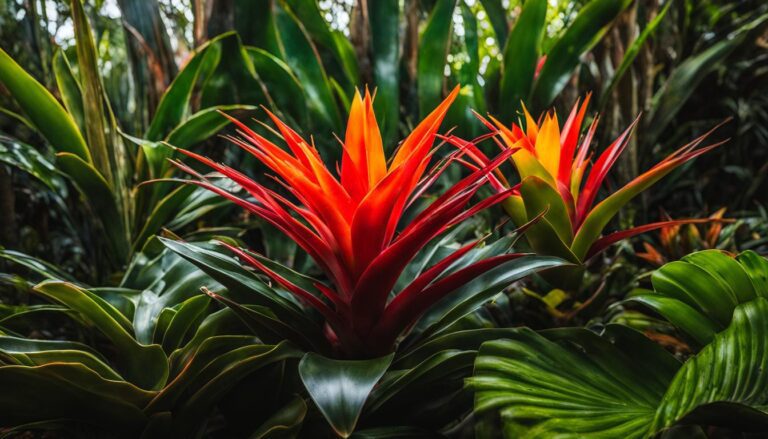
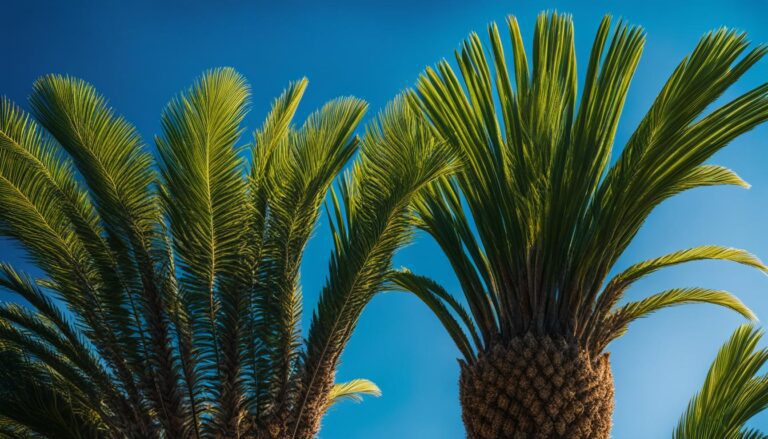
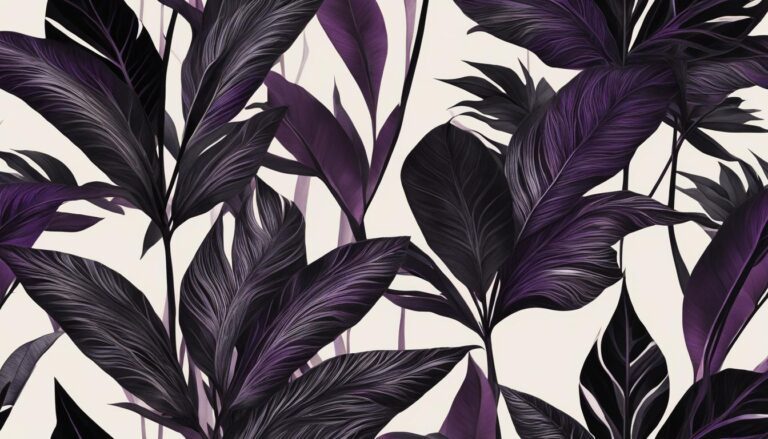
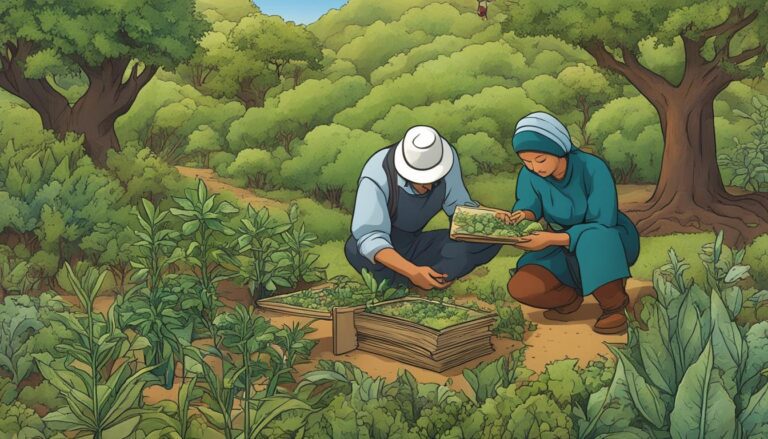
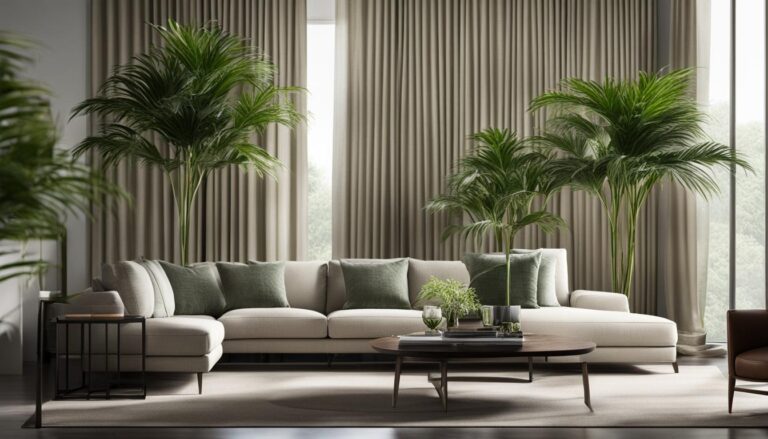
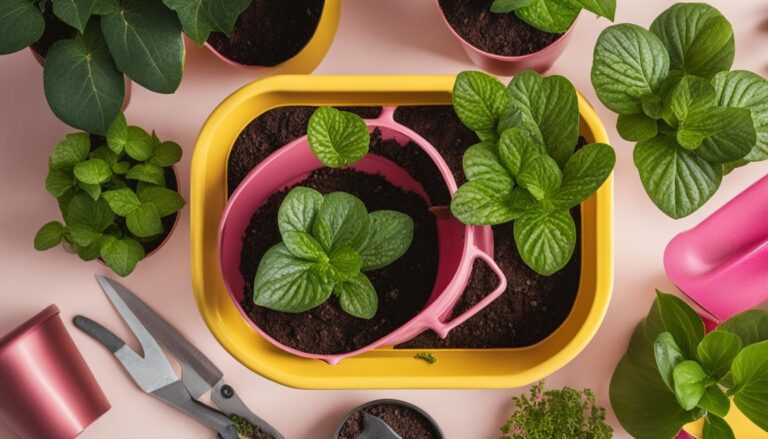
2 Comments
Comments are closed.